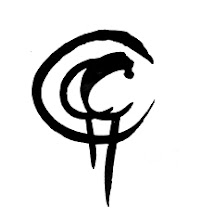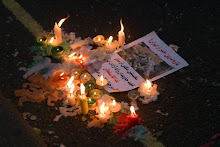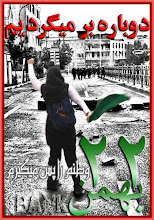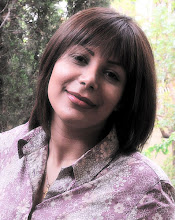I had no idea what to expect when I opened this book. I deliberately didn’t read any of the reviews. The only thing I had really absorbed was the image of the hare with its amber eyes which is on Edmund de Waal’s website. I still think it’s one of the most beautiful things I’ve ever seen.
You can really lose yourself in the journey which forms back bone of this story and in the histories, the politics, the atmosphere and, above all, the objects, artefacts and interiors. It has been described as a memoir but it reads more like a cross between a thriller and a family saga with a hint of political journalistic travelogue thrown in. The chase is about objects, art objects, art history, collectors and collections. You’re panting your way across Europe from art dealer to salon to soiree to dressing room and at one stage, in the middle and, arguably, the heart of the book, we’re being lead through the cavernous rooms and corridors of a Viennese banker’s Palace, opulent to the point of vulgarity and crammed full of the, ‘accumulation of stuff from four decades of affluent shopping,’ (he’s scathing about their taste). All this is for the purpose of finding the netsuke, the hoard of 264 tiny carved creatures, human, animal and plant life. They are variously sexy, mysterious, malevolent, and much more, and we are introduced to them as the story proceeds. He holds back from really exploring the objects themselves until close to the end, which is perhaps why it feels so much like a thriller. The dénouement involves a brindled wolf, a hare with amber eyes, a tiger – who’s the star apparently, a monk with a begging bowl, a woman in a bath, a great many rats, some persimmon seeds and so it goes on.
It starts, if you read the preface, in Japan with de Waal’s great uncle Iggie who, when we first meet them, is the owner of the netsuke. Here too we learn that de Waal will be their next owner. The netsuke themselves also start in Japan, this is where they were made but several centuries earlier.
Part One, Chapter One starts with the writer as researcher in Paris, standing about on street corners looking at buildings and blagging his way into them seeking hard evidence about the Charles Ephrussi, his great, great uncle, who was a Nineteenth Century connoisseur, collector, art historian and aesthete and the son of Leon Ephrussi, the mighty grain merchant of Odessa. Leon was himself the son of the immensely ambitious Charles Joachim who changed his name to Ephrussi from something altogether more peasant-like and who developed the then modest agrarian business into a prodigious, global Empire. Leon continued the success and sent his sons to Vienna, the heart of Europe, the very pulse of Hapsburg Empire, to start a bank, be a magnificent and out do the Rothschilds. Then they set about conquering Paris. There’s fantastic story in the first few pages and I wanted to know so much more about creaking grain carts and the shtetl in the Ukraine the thick black earth and all the rest of it. But we had to go in search of the caved beasts with their multi-coloured eyes, so that was it. We return to Charles who was the first member of the dynasty to own the netsuke.
In Paris, we get to know Charles, his milieu, his way of thinking about things and, especially, about collection and display. Simultaneously, we are becoming acquainted with the relentless, meticulous nature of the research process. This first part, as well as being a portrait of Charles and his astonishing art collection, which includes a procession of famous paintings now hanging in places like the Louvre and the National Gallery, is also an intimate portrait of research itself. It doesn’t happen on screen with search engines. The search engine in this case is de Waal himself ferreting through dusty boxes, lurking in doorways, nipping upstairs when no one’s looking and weedling his way into people’s lives to excavate, endlessly.
I have talked about one part of this epic journey. The rest is consistent. Although written in five parts, the story feels like it has three main stages, which are defined by the owners of the netsuke, Charles, Emmy and Iggie. The Emmy part is divided in two – the first half is the happy, social, glamorous time of parties, love, sex and shopping. These are the last heady days of the Hapsburg Empire before Nazification and war. The second half is the violence, dispersal, menace, and loss defined by the Nazi occupation and the holocaust and the extraordinary loyalty of Ana, Emmy’s maid, and the hiding and rescue of the netsuke.
This is a family of Russian Jews who become European Jews and then, in his words, 'had to encounter the Twentieth Century.' De Waal is dealing with very big stuff on a very intimate scale. At no point does he yield to nostalgia, nor is he afraid of this massive and complicated heritage. He does not romanticise this family or its story which would be extremely easy to do. He is critical of their behaviour where he feels they deserve it which allows him to write with real warmth about the people he loves – including the ones he could never have met. He winces palpably in the writing when Charles under pays one of his artist friends for their work but is full of praise for the way he cares about art. He doesn’t quite call the Vienna family a bunch of jumped up nouveau-riche plebs, but he does sort of suggest it – this is where he compares the ‘carefully calibrated,’ thoroughly well informed collection of Charles in Paris with the ‘accumulation of stuff from four decades of affluent shopping,’ in Vienna. At the same time, though, he loves Emmy and her love of clothes.
Weaving in and out of these minutiae of the family saga and the journey of the netsuke is a detailed discussion of anti-Semitism, what it is and how it works. He discusses the history from the ‘stinking hovel’ that defined the impoverished Eastern European Jews in the shtetl through the period of gaining citizenship and civil rights in Europe to the point where they were, realistically, able to own things and earn money. He then paints a graphic picture of the newly acquired wealth of some of the Viennese Jews as compared to the ‘proper Jews,’ the grindingly poor ones, who were grudgingly tolerated because at least they had the decency to be authentically poor. What comes across with ringing clarity is the sense that wealth in Vienna was welcomed as long as it wasn’t Jewish wealth. Forget culture, writing, music, theatre, art, knowledge, anything that the Jewish population of Vienna at the time might have contributed, ‘they,’ the Jews, had got ‘above themselves,’ they were, ‘taking over.’ He traces the itinerary of anti-Semitism from a casual ‘given,’ where it was not just tolerated but normalised, showing how that created a fertile ground for the growth of the monstrous, politicised, paranoid, obsessive activism it became, culminating in the Third Reich and the Holocaust.
The view from the pages of this book is panoramic and global. From Europe descending into a state of savagery and eclipse we emerge slowly into lighter times, moving from the United States, to English suburbia with trim hedges and, finally, back to Japan. The last part of the book, the, ‘Coda,’ comes back to London with the writer and includes a visit to Odessa and, once again, I longed to visit Berdichev in the Ukraine, the shtetl where it all started but no, we stayed in Odessa on the promenade and imagined the black earth on the Eastern Ukraine border with Poland.
It’s a wonderful book. Just read it.


























































